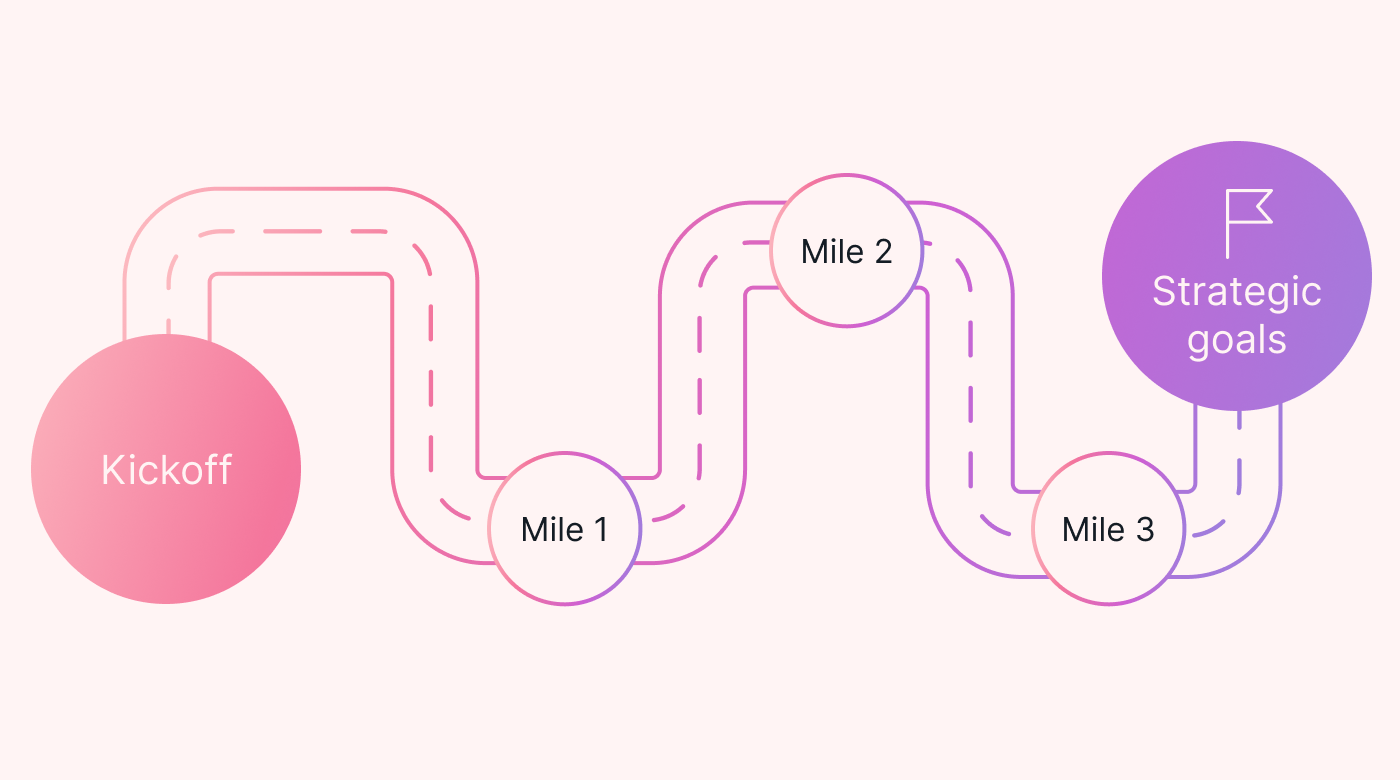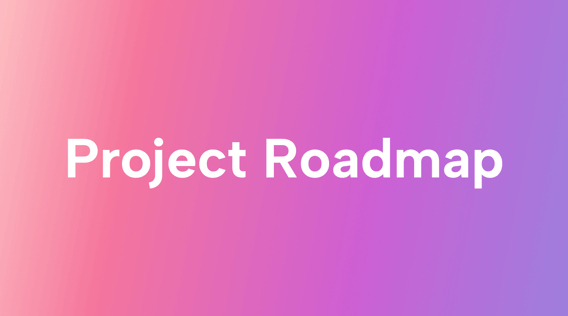Running projects can be like herding cats: it takes lots of time and energy to keep stakeholders and your team members on track, doing what’s needed. To keep all your cats pulling in the same direction, you need to regularly communicate with them.
A project roadmap is a great tool for that communication. It’s a visual bird’s eye view of the entire project.
You can deliver a project roadmap using an online project management tool or just a spreadsheet application. Precisely how you present your project roadmap will depend on preference, the project itself, your team and other stakeholders.
What is a project roadmap?
By visualizing project tasks, milestones and deliverables on a timeline, a project roadmap offers a high-level visual representation of the project plan. It may also contain information about the different project phases, scope, and resources.
Because of it’s high-level, visual nature, the project roadmap is also good for managing expectations by keeping stakeholders informed of progress throughout the project life cycle.
Project roadmap vs. project plan
If a project roadmap is a high-level, visual representation of a project’s lifecycle, a project plan is the plan of attack for the project. The project plan is (also) a high-level document and references other, more detailed, project documentation.
6 inputs to consider for your project roadmap
The work to be done
The basis of any project is the work to be done. For projects managed using the Waterfall methodology, this information is usually in a document called a work breakdown structure (WBS), while on Agile projects you’ll find it in the product backlog.
The project timeline
Projects typically begin with a kickoff meeting, which should be the first item entered onto the project timeline. By consulting the project documentation compiled during the project scoping process, it’s possible to build a representative project timeline. It’s important to note that going into too much detail can dilute a project roadmap’s effectiveness.
A popular way to represent a project timeline is with a Gantt chart. It has two primary elements: a task list down the left-hand-side and a timeline across the top. The format illustrates completed work versus planned work and can also reflect task dependencies.
Key individuals
One of the most important project documents is the RACI chart or matrix. RACI is an acronym for Responsible, Accountable, Consulted, and Informed. This matrix will name members of the project team, describe their level of responsibility for tasks in a project, and set expectations for all involved.
The RACI chart helps you identify who needs to receive the project roadmap. It can also help you identify who to approach when decisions are needed.
Strategic goals and milestones
Iis critical to list the high-level tasks and milestones for the project in a project roadmap.
 |
Every project has a set of strategic goals and objectives. They are the reason you're undertaking the project in the first place. But to achieve those goals and objectives, you need to set milestones along the way.
A project can feel like eating an elephant, and the best way to do that is one bite at a time. That’s where milestones come in. They help you make steady progress toward the project goals. Showing them on the project roadmap helps the team orient themselves in the project lifecycle.
Complexity and dependencies
The complexity of a project should also be factored into a project roadmap. The more tasks in a project, the more complex a project can get (exponentially).
There are often times in a project when two or more interdependent tasks need to be tackled at the same time. When something like this happens, the project can’t continue until all the parallel tasks are complete. If you encounter a hiccup with just one of them, it can hold up the entire project, cause delays, or even put the project in jeopardy if not quickly resolved.
These situations are represented as a fork in the road (or more than one) in the project roadmap diagram, and it is good practice to have a milestone at the point where the roads come back together.
Single source of truth for the project
The bigger the project, the more documentation there will be. This is a necessary evil so that all team members on the front line have the details they need to do their jobs effectively.
 |
The level of detail required of reporting, though, diminishes as you move up the chain of command. A project sponsor, for example, will normally only be interested in the big picture. Therein lies the beauty of the project roadmap. It conveys crucial information in an intuitive, visual manner. It’s the ideal status communication method for those not interested in the finer details.
Five steps to an effective project roadmap
Understand the project scope
The first step is to understand the high-level objective of the project. For this, you can turn to the project charter document. It should provide information about the project goals and the time it is expected to take to achieve those goals.
Map tasks on your roadmap
For the work to be done on a project, you’ll need to consult the WBS or product backlog. As mentioned earlier, these documents break down your project elephant into small, manageable bites.
But be careful not to drill down too deeply into the detailed tasks. The level of detail will depend on the nature of the stakeholders for whom you’re creating the project roadmap. While you would usually focus only on the bigger tasks (and milestones) of a project, some stakeholders may need more detail.
Understand task dependencies
Task dependencies specify the order in which tasks must be performed. Understanding task dependencies is important because they can create bottlenecks that could cause problems in a project (and affect the project timeline).
For example, if you are re-organizing a production line for greater efficiency, good chance that equipment and work stations need to be moved first. Something as simple as not getting a forklift onsite soon enough could delay the whole project. For this reason, you must understand the order of operations of the tasks and their effect on your roadmap.
Add project deliverables
Another important set of elements in a project roadmap are the deliverables. When creating a project roadmap, it’s critical to plot those important deliverables in the roadmap.
Timing is what matters most here. For stakeholders, missing delivery dates could be a sign that overall project success may be in danger.
Set your milestones
When you are on a road trip, signs along the side of the highway indicate how far you’ve come and how far you have to go. Ditto for project milestones. They represent deliverables or phases of a project and if/when they are completed.
Stakeholders expect the project to reach milestones on or before the date specified. If you don't deliver, a red flag will go up.
Different strokes for different folks
Stakeholders can be picky and will want their project updates in any of a wide variety of formats, with varying levels of detail. The easiest way to accommodate this is to start with a project roadmap and add or subtract from it based on feedback.
There are many tools that can help you to create project roadmaps. A good place to start is with Motion’s AI Project Management App, which can help you produce a high-level roadmap by plotting all the tasks of a project in an intuitive, visual manner.





